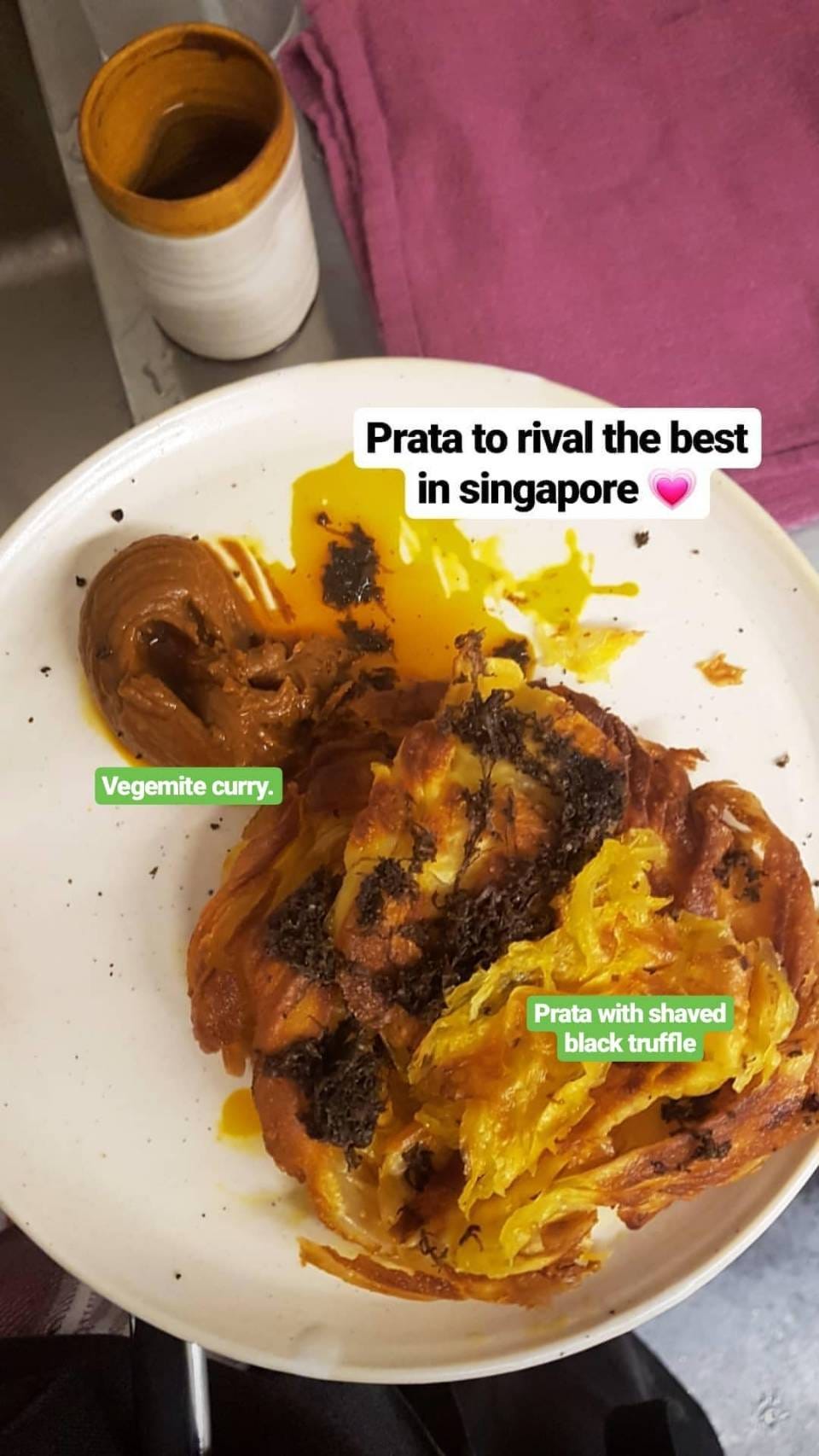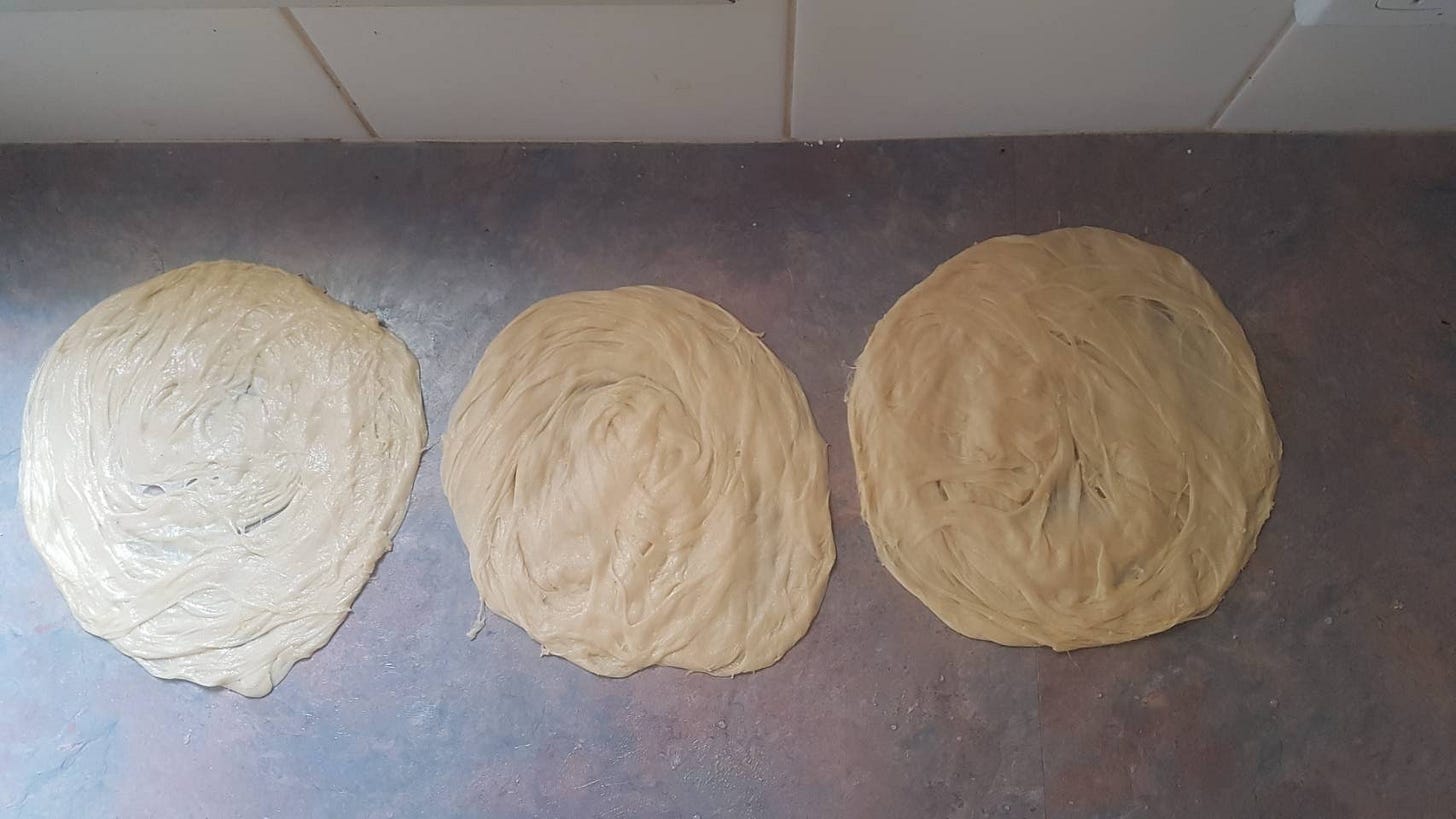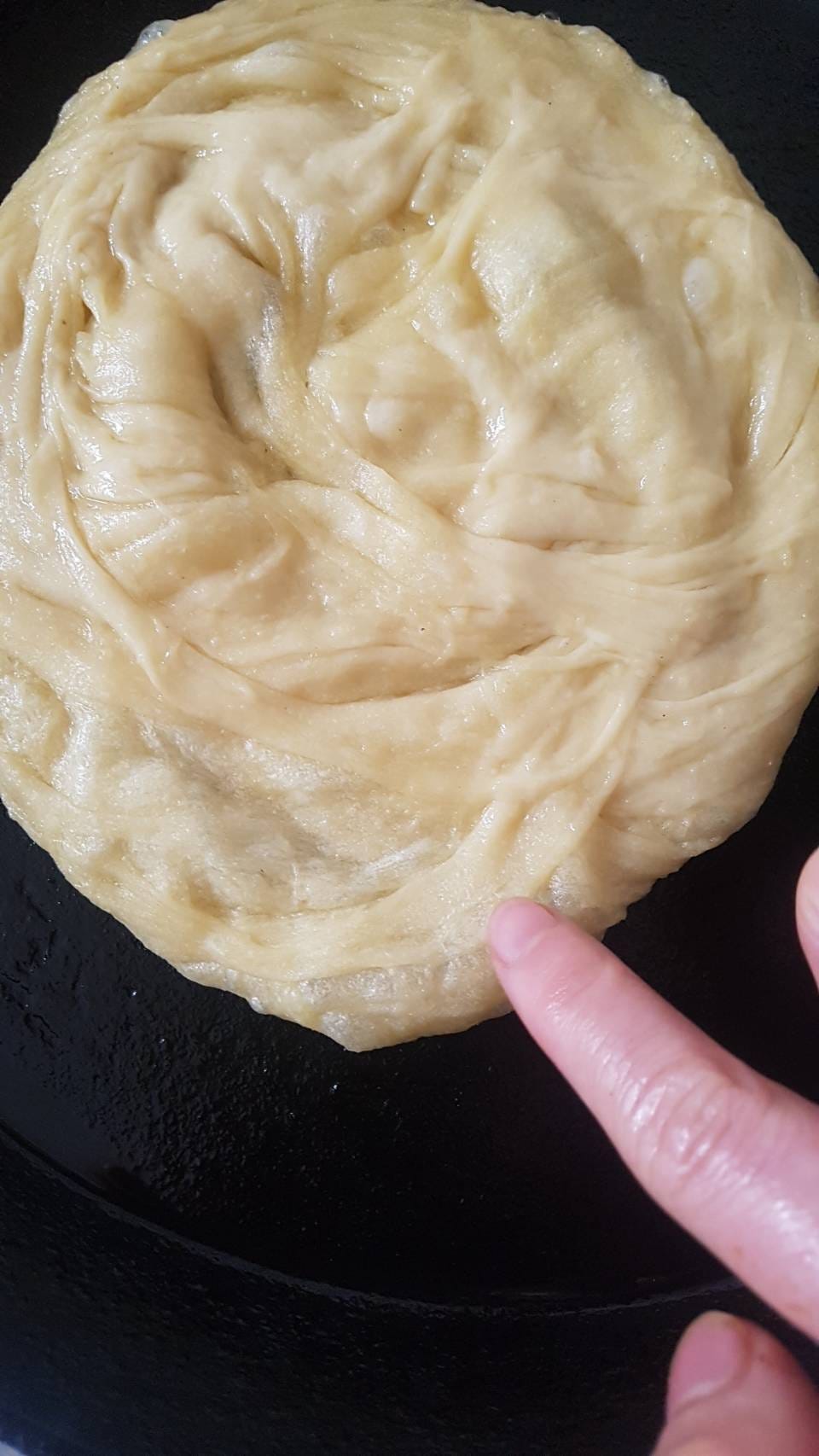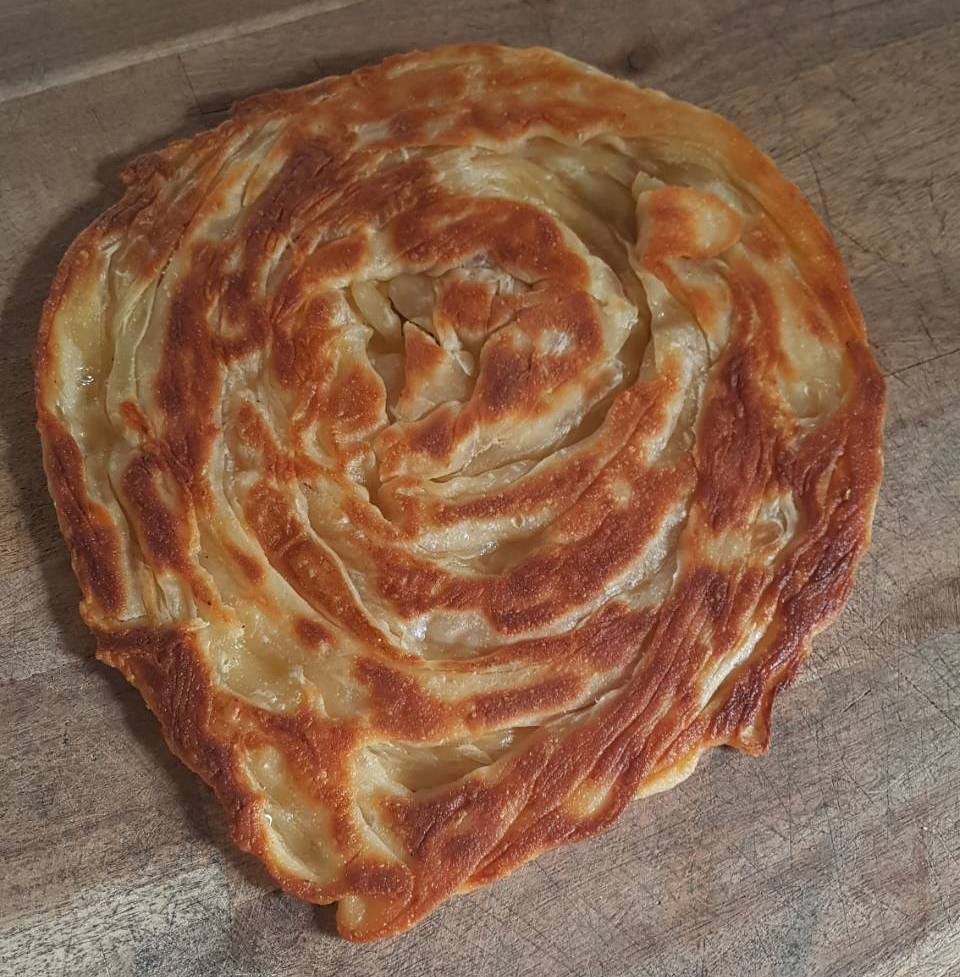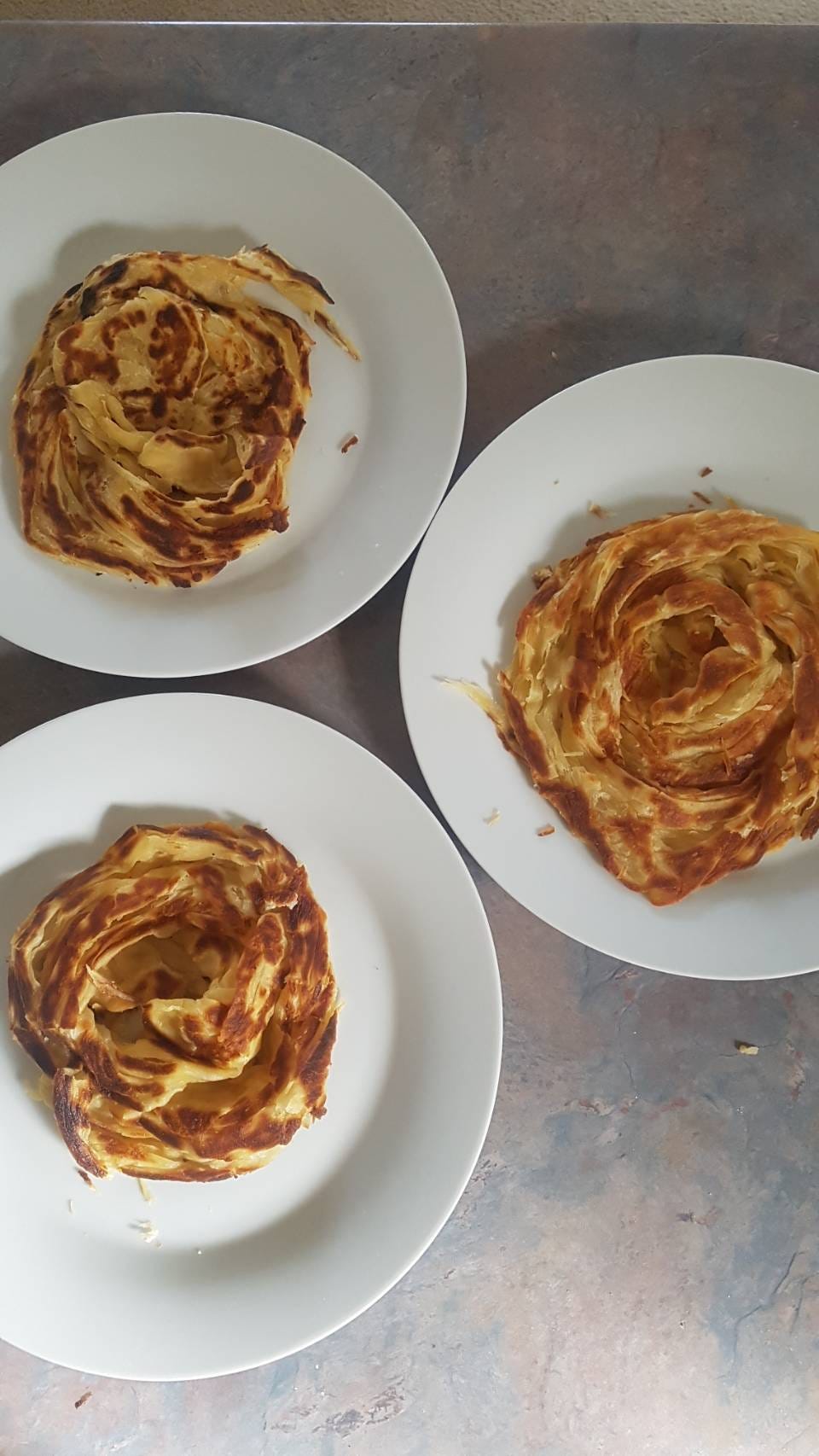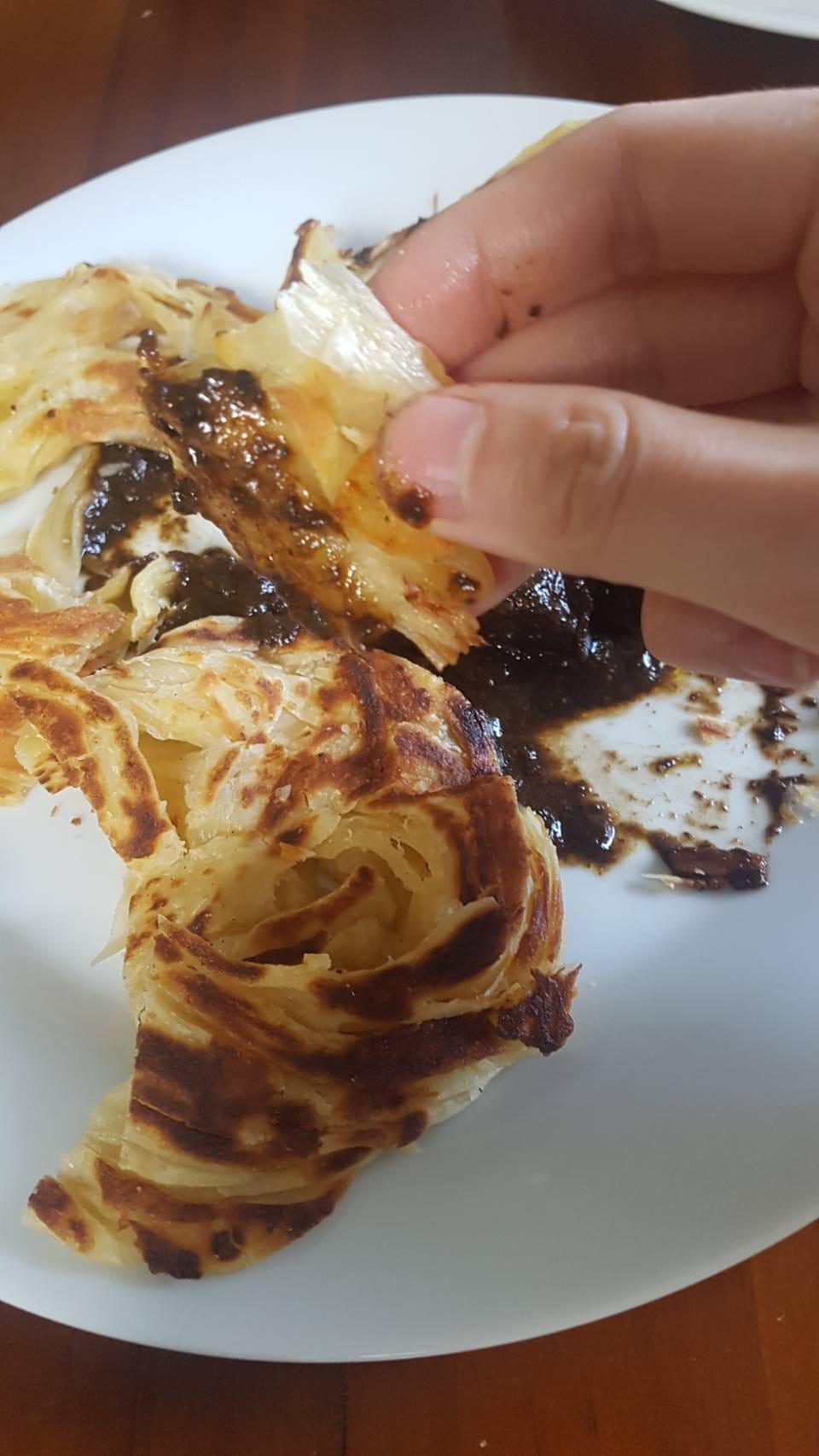Three years ago, when I first moved to Melbourne, I did a trial at Sunda. It had only been opened for a month or two then, but the food on their socials looked really innovative and exciting - banh xeo tuile, fresh kwaytiao made with prawn stock instead of water, and buttermilk truffle roti with vegemite curry. After service Chef Khanh asked what I’d like to try on their menu. I knew exactly what I wanted - the roti.
He got a cook to fry up the roti and asked, “Do you like truffle?” I sheepishly nodded and he grated fresh black truffle all over to finish the dish. I took it to the back to taste it and, my god, it blew my mind in that tiny dishwashing area. The vegemite curry and black truffle were delicious but there was no mistake that the roti was the star. It had crispy shards just like a croissant, with almost no chew. It was like someone took my favourite coin prata and made it standard prata-sized.
When I returned to the kitchen, I told him it reminded me of Sin Ming’s coin prata. And it turns out that his visit to the very same stall was what inspired the dish!
Sunda’s buttermilk roti sans truffle costs $16, and the Singaporean in me is like “WHAT? $16 for a kosong??” But you know what, it was worth every dollar.
If we were to be very honest with ourselves, plain prata in Singapore isn’t thaaaat great. There are a few exceptions of course (Springleaf prata does an excellent version), but for the most part, prata comes soft and soggy even when you order it in house. It is a mere vehicle for soaking up curry.
With Sunda’s roti gaining almost cult-like status in Melbourne, restaurants and pop-ups in Melbourne have been putting forth their own versions. My boss at the cooking school asked me if I’d like to do a class on Singaporean food, specifically a roti class. “Actually, roti in Singapore is pretty different from the roti in Australia… There are different kinds,” I tried to explain. “I really like the flaky ones,” he said, so Aussie-style roti it is!
I don’t think it is taking away from the spirit of a Singaporean cooking class to be teaching Aussie-style roti. Singaporean cuisine has always been like a sponge, and Aussie roti is so delicious that it is now my preferred prata style, possibly dethroning coin prata haha. I wanted to give it a go, so I started with the roti prata recipe from the Singapore Noodles website and made three doughs.
(From top left, clockwise: hot water, sourdough, regular)
After a night’s rest, it was time to flip the dough and rub on a liberal amount of ghee.
Right off the bat there were a few differences. Surprisingly the hot water dough tore more easily and the stretched out sheet felt slightly tougher than the regular/ sourdough. I had thought that the sourdough would have been slightly gassy after an overnight rest and tricky to stretch, but it flipped just like the regular.
(Left to right: regular, hot water, sourdough)
After the coiled up balls rested for about half an hour, I flattened them out as thinly as I could. As you can probably guess, the hot water dough was the most resistant to the stretching.
(Left to right: regular, hot water, sourdough)
When it came to frying, the sourdough performed the best. All three browned beautifully but the sourdough roti had beautifully air pockets here and there from the natural yeast:
Fresh out of the pan - a crispy, sturdy disk.
After lightly crushing it between cupped palms, the layers become more separated and you can see how flaky it is:
All three doughs produced seriously good roti, but the hot water one was just a smidge tough on the inside while the other two had tissue-thin, tender layers. Between the regular and sourdough, it was a close fight, but the sourdough would be my pick. It had more separation between the layers and the flavour was more complex (the plain roti tasted like its ingredients).
(Clockwise from top left: hot water, regular, sourdough)
For brunch, Wex and I took half of each roti and enjoyed them with leftover rawon. Ultimately, when you slather on such a complex-tasting, strongly flavoured gravy, even the most discerning eater can’t tell the difference. So my verdict is: make sourdough roti if you have starter, but if you don’t, the regular roti is a really good option!
P.S. buah keluak gravy and roti is such a great combination - would make this again and again!
Aussie Roti for 2
For regular roti: Mix 116g plain flour, 4g sugar, 2g salt. Mix 14g melted butter, 20g evaporated milk, 6g condensed milk, 12g egg and 34g water.
For sourdough roti: Mix: 112g plain flour, 4g sugar, 2g salt. Mix 14g melted butter, 20g evaporated milk, 6g condensed milk, 12g egg, 30g water and 8g starter.
Combine wet and dry ingredients. Rest 20 minutes, before dividing into 2. Shape into balls, coat in ghee and rest overnight at room temperature. Flatten with the heel of hand before stretching or flipping into an extremely thin sheet. Lift up the left side of the dough and drop it over the middle of the dough. Repeat on the right. Coil up. Rest for at least 30 minutes. Flatten or roll out to form a very thin flatbread. Fry in ghee on medium heat until richly brown. Lightly crush between cupped hands.
Rawon
Serves 4-6




